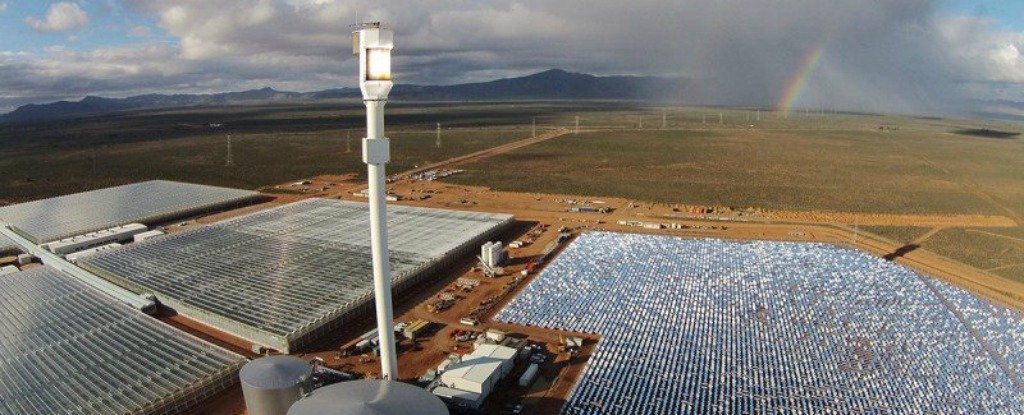Sundrop Farms in the South Australian desert manages to grow 17,000 tonnes of tomatoes every year using nothing but sunlight and seawater.
The indoor farm is the first of its kind, and the result of six years of research by an international team of scientists who wanted to find a way to produce crops without needing fresh water, soil, or unnecessary energy from the grid – something we’ll need to get used to when these resources become more scarce.
“A conventional greenhouse uses groundwater for irrigation, gas for heating, and electricity for cooling,” the team says on their site.
“A Sundrop greenhouse turns seawater and sunlight into energy and water. We then use sustainably sourced carbon dioxide and nutrients to maximise the growth of our crops.”
The general concept of the farm – which opened its 20-hectare commercial site in Port Augusta back in 2014 – is basically to reduce the amount of energy and fresh water needed to make profitable produce by using seawater from the Spencer Gulf, which lies 2 kilometres (1.24 miles) away.
After the seawater arrives at the farm, it is desalinated at an on-site, solar-powered plant that turns it into fresh, plant-ready water by ‘scrubbing’ the salt out of it, reports Alive Klein at New Scientist.
The roots of the vegetables are grown in coconut husks, and to keep the plants cool enough in the harsh summer heat of up to 48 degrees Celsius (118 Fahrenheit), the team uses seawater-soaked pieces of cardboard at their base. The heat from the Sun is enough for the plants to survive during the winter months.
The fact that the plants are grown indoors also negates the need for pesticides, because closely monitored conditions allow for a controlled, pest-free growing environment.
That’s all well and good, but the real trick the team has come up with is a way to power this gigantic facility using only solar energy.
Instead of lining everything with solar panels, they’ve created a field of 23,000 mirrors that focus the Sun’s rays onto a fixed tower, where it powers a generator to create electricity.
Despite the system working efficiently, so far, the farm is still connected to the power grid as a safety net, just in case something goes wrong, especially during the winter.
“We use the Sun’s energy to produce freshwater for irrigation. And we turn it into electricity to power our greenhouse to heat and cool our crops,” the team says. “Our ventilation also uses seawater to clean and sterilise the air, so it keeps bugs under control without the need for pesticides.”
Although it’s still early days, experts think the Sundrop Farm system could be a solution to the woes farmers face across the world as fresh water becomes more scarce, land becomes more arid, and energy costs go up.
“These closed production systems are very clever,” researcher Robert Park from the University of New England in Australia, who isn’t involved in the project, told New Scientist.
“I believe that systems using renewable energy sources will become better and better and increase in the future, contributing even more of some of our foods.”
There are a few downsides though. Firstly, there’s no word as yet on whether or not this sunlight-collecting system has had any negative impact on other animals in the desert. Similar mirror-based solar facilities in the US have been known to incinerate upwards of 6,000 birds per year as they fly in front of the highly concentrated sunbeams to hunt insects.
The farm also has a pretty big upfront price tag. Sundrop Farm’s commercial facility, which houses about 180,000 tomato plants, cost roughly US$ 200 million to build. But the team says that because they can predict their costs more accurately than traditional farms, that hefty sum will soon pay off.
Only time will tell if systems like Sundrop Farm’s will become the future of agriculture, but researchers around the world will be watching them closely. Check out the video below to see inside the farm (via ScienceAlert)…
If you like this idea, be sure to share it with your friends and inspire someone you know. Anything becomes possible with just a little inspiration…

